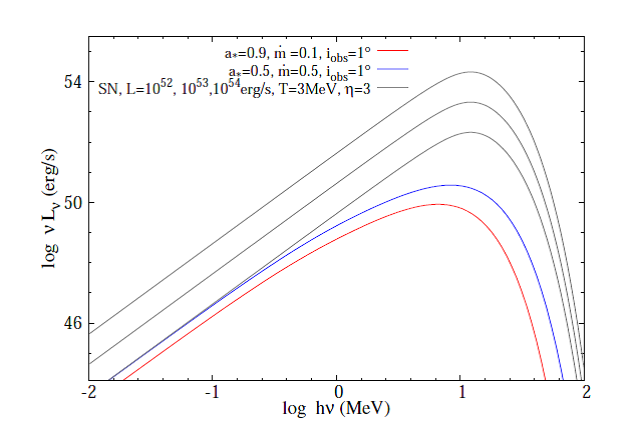Neutrino-dominated accretion flows (NDAFs) around rotating stellar-mass black holes (BHs) have been theorized as the central engine of relativistic jets launched in massive star core collapse events or compact star mergers. In this work, we calculate the electron neutrino/anti-neutrino spectra of NDAFs by fully taking into account the general relativistic effects, and investigate the effects of viewing angle, BH spin, and mass accretion rate on the results. We show that even though a typical NDAF has a neutrino luminosity lower than that of a typical supernova (SN), it can reach 1050-1051 erg s-1 peaking at ~ 10 MeV, making them potentially detectable with the upcoming sensitive MeV neutrino detectors if they are close enough to Earth. Based on the observed GRB event rate in the local universe and requiring that at least 3 neutrinos are detected to claim a detection, we estimate a detection rate up to ~ (0.10-0.25) per century for GRB-related NDAFs by the Hyper-Kamiokande (Hyper-K) detector if one neglects neutrino oscillation. If one assumes that all Type Ib/c SNe have an engine-driven NDAF, the Hyper-K detection rate would be ~ (1-3) per century. By considering neutrino oscillations, the detection rate may decrease by a factor of 2-3. Detecting one such event would establish the observational evidence of NDAFs in the universe.
From: http://journals.aps.org/prd/abstract/10.1103/PhysRevD.93.123004

Figure: Electron neutrino spectra of typical SGRBs (blue line), LGRBs (red line),
and O-Ne-Mg core-collapse SNe (gray lines).

Table.: The estimated NDAF detection rates for three neutrino observatories.